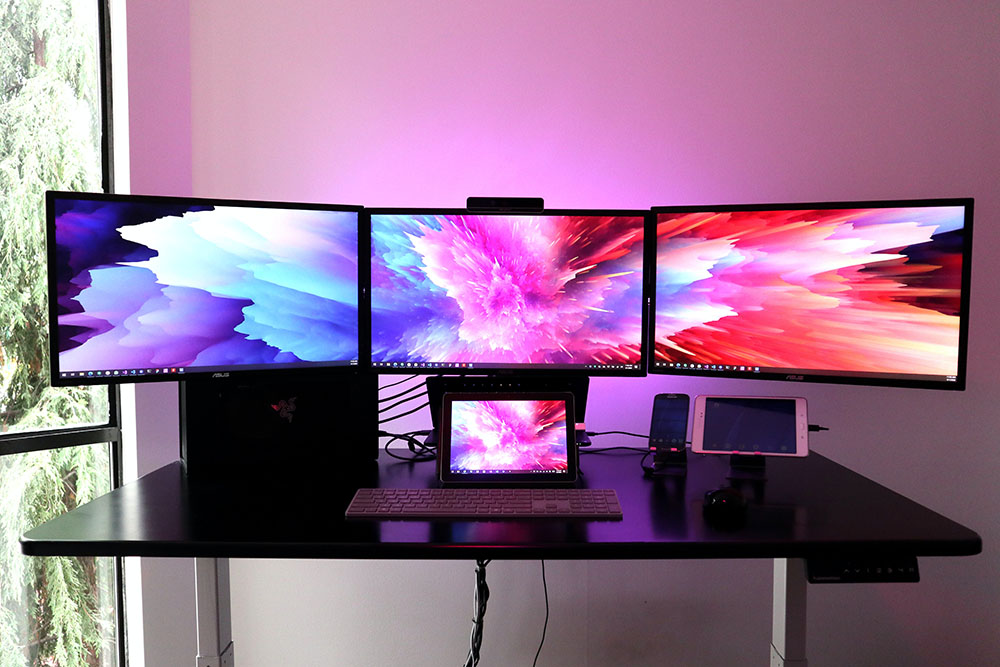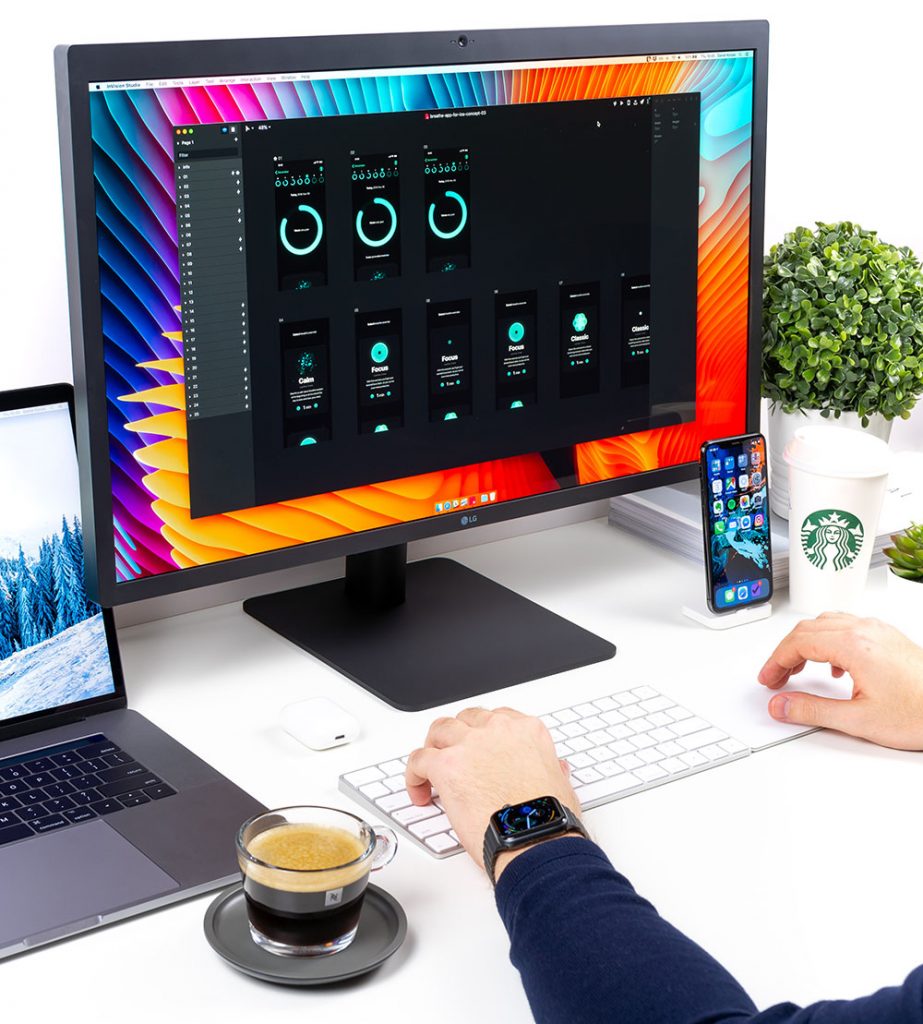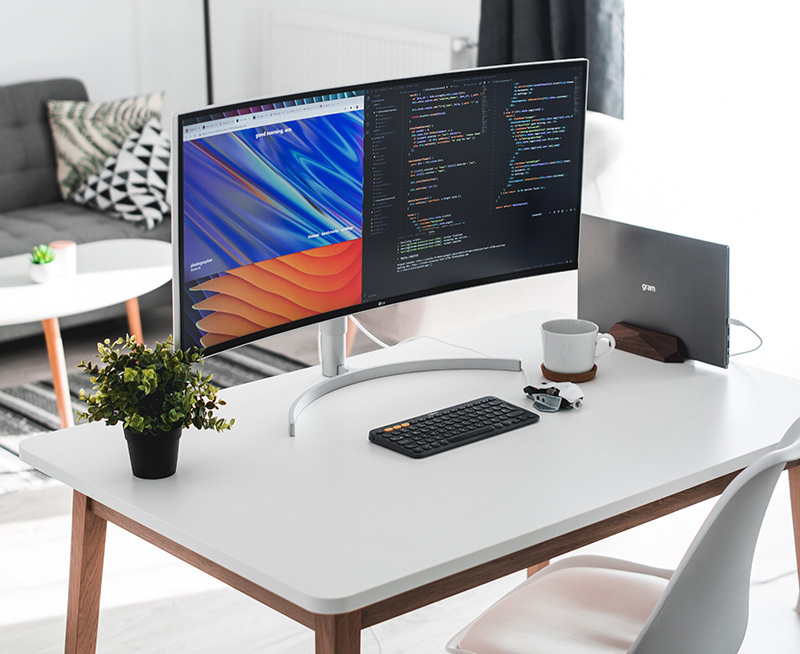We live – largely – in a laptop age, where just about every PC has its own screen, but that doesn’t mean that the humble computer monitor is on the way to becoming a relic. Laptop screens only go so far and so large, and there’s a wide array of reasons why you may want or need a computer monitor rather than a laptop screen.
So if you’re shopping for a monitor, what do you need to know?
The very first thing you should do is work out what you need the monitor for, because the needs of a business buyer are different from those of a general purpose home user.
If your passion is gaming or high-end content creation, your needs are different again. There’s some crossover with needs of course – there’s nothing saying that you can’t use the monitor for your small home business for gaming or personal use after hours – but broadly if you fall into one of those categories you should consider the following:
- Business users: Consider widescreen monitors (for more web pages or spreadsheets open at once). A larger screen may help, but it’s not vital especially for more compressed work spaces. You probably don’t need to stress refresh rates, but higher resolutions will make it easier to read documents all day long.
- General users: An all-purpose monitor is your friend here; look for a screen in the 24 to 30 inch range with decent refresh rates and resolution, though often budget considerations will be more of a concern than anything else.
- Gamers/Content Creators: Here you want to look for high refresh rates and low input lag if you’re gaming, as well as graded colour accuracy if you’re working on photo or video content at that end. Screen sizes can go up to very large, and this is also where you may want to consider an OLED screen rather than a standard LCD/LED type.

Terminology untangled
When you start shopping for a monitor, it can quickly get super confusing with so many acronyms and numbers floating around. Here’s a quick guide to the terms you’re likely to see, what they mean – and whether they should mean much to your final buying decision:
Size, ratio and resolution:
Most displays will sell with a measurement in inches, which feels a tad archaic, but it’s the standard for screens. Specifically, it’s the measurement along the diagonal of the screen. Look for at least 24 inches in a separate display; anything smaller won’t seem like much of an upgrade from most laptop screens.
The diagonal measurement of a screen can give you a rough idea of size, but you also have to consider the screen ratio – which is to say the relative difference between the screen width and height. Most typical computer monitors are sold in a 16:9 ratio – the same as TVs, basically – but you can also find plenty of 21:9 ultra wide monitors, which can be good for some gaming purposes but also quite nice for working if you want multiple documents side by side.

Once you get your size and ratio sorted, you need to consider actual resolution. This is the literal number of pixels in the display. Typically for monitors you’ll start at HD or Full HD(the 1080p equivalent for TVs), 2K or 4K. 4K is great for gaming and content creation, but overkill for everyday working use. Bear in mind that a larger display with a lower resolution will look less “sharp” than a smaller one with a higher resolution, because each of the dots on that bigger display will in themselves be a little bigger and chunkier.
Refresh rates and response rates
Refresh rates for screens are measured in Hertz (Hz). The number expresses the number of times the screen redraws itself entirely within a second. The baseline here is 60Hz – if a screen doesn’t list that specification it’s almost certainly just a 60Hz panel – but faster refresh rates from 90Hz and upwards can offer smoother scrolling and reduced flickering. Not surprisingly, refresh rates are key metric if you’re after a gaming monitor.
Response rates differ from refresh rates, because they reflect the typical amount of time it takes for the screen to react to keyboard, mouse or controller inputs. A low response rate can lead to onscreen “ghosting”, where you see an image (or part of it) fading across the screen as it moves. Again this is something that mostly impacts gaming monitor choices; if you’re not in that category then whether the response rate is 5ms or 0.5ms isn’t going to matter much to you.

Screen types: TN/VA/IPS/OLED
TN (Twisted Nematic) LED screens are typically the cheapest screen types you’ll find. While you can often find TN panels with higher refresh rates at a given price, they do tend to offer worse colour accuracy. They’re fine for everyday use though, if you just want to surf the web or work on simple documents.
VA (Vertical Alignment) LED panels typically boast the best colour accuracy if you’re doing (for example) photo work, or if you wanted your monitor to also act as your effective TV screen as well. The downside here is that they usually have the slowest response times. You may also see SVA panels advertised; this is the same technology but with slight tweaks that make them more vibrant when viewed from side angles if that’s important to you.
IPS (In-Plane Switching) monitors are the best of breed in most cases for both colour accuracy and (for most modern IPS screens) refresh rate, but you do pay a price premium in return. They’re not always the best choice for gaming however, as the fastest response screens still tend to be the TN type at more affordable prices.
OLED (Organic Light-Emitting Diode) monitors use the same technology you’ll find in the very best TVs right now, with vibrant colours and excellent contrast, making them a good choice for gaming and entertainment purposes, as well as content creation. However, they’re easily the most expensive computer monitors on the market right now.
Can I use a TV as a computer monitor?
You absolutely can do this, because the HDMI connection most frequently used for TVs is the same exact standard as it is on most computers. You may need conversion cables for some laptops or desktops if you don’t have a standard HDMI port from your device, however.
However, there are some challenges that can make using a TV as your PC monitor less attractive. You’ll typically have to find out what the maximum resolution your TV can handle is and switch your computer to that resolution to get the best match for your screen size. In some cases this may involve unused black areas of the screen, or possibly considerably chunkier looking text and graphics than you’re used to. Some TVs do have specific PC modes to help with this problem.
The other issue is one of size and distance. Most TV panels are huge, and that might seem like an appealing prospect if you’ve ever dreamed of having a huge monitor. However, they’re also built around the idea that you’ll sit quite a long way from them, usually on your sofa and not your computer desk. Sitting that close to a TV panel will quickly show lower resolution and pixel issues, as well as any mismatches between refresh rates. It’s a workable solution, but unless your TV specifically states it’s got a PC-ready mode, it’s one that’s not likely to work quite as well as a dedicated PC monitor.
Transform your home computer setup into a seamless and efficient workspace – trust our experts to handle the installation, configuration, and optimization for an optimal computing experience.




